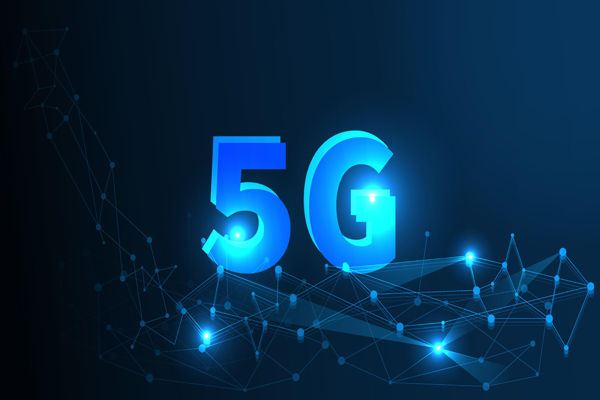From 5G to 6G: The race for innovation and disruption

From 5G to 6G: The race for innovation and disruption
McKinsey Technology Trends Outlook 2022 shows that 5G, 6G, low-orbit satellite communications, and other advanced connectivity technologies, with an investment of $166 billion in 2021, are driving growth and productivity across industries. Along with other new technologies such as artificial intelligence (AI), mobility (sustainable transportation development), the adoption rate of this technology is high.

In a report shared with TechRepublic, Market Research and Future mentioned that the COVID-19 outbreak is an important catalyst for the global adoption of 5G technology.
Market Research Future said that 5G technology can achieve faster industry transformation with greater capacity and low latency, and it will affect the development of fields such as transportation, banking, flow control, telemedicine, agriculture, and digital logistics.
New technologies such as artificial intelligence, machine learning, the Industrial Internet of Things (IIoT), new smart cars, and virtual reality applications in the Metaverse also require faster download times and more real-time data communications. 5G and 6G will solve these problems, thereby better supporting the development of new technologies.
Market Research Future explained that 5G base station deployment is not without its challenges, notably the standardization of spectrum and the complexity of 5G network installation. 6G technology will also face challenges, MIT Technology Review added, and it will require innovation across disciplines, new chips, new equipment and software.
Technical challenges facing 5G and 6G
The next-generation cellular mobile communication technology that provides higher spectral efficiency and high bandwidth has been debated. As McKinsey explains, many are still wondering if 5G can completely replace 4G LTE networks, and how widespread 5G will be.
According to the Global Mobile Suppliers Association, as of May 2022, 493 operators in 150 countries are investing in 5G technology, and another 200 companies have the technology available for 5G. By the end of 2020, the number of newly released 5G smartphones increased by 164%, and the number of 5G devices entering the procurement catalog increased by 60%.
But while new consumer electronics have quickly been equipped with 5G capabilities, industrial and commercial equipment has not.
"Moving from a 4G LTE network to a 5G private network is not cost-effective for all players; it will depend on the player's technical ambitions and planned use," McKinsey said.
Market Research Future said that $61.4 billion is driving this very competitive market, which is expected to reach a market value of $689.6 billion by 2027. It has to be mentioned here that the inadequacy of infrastructure, equipment and software has been a constraint to the rapid development of this market.
"MIT Technology Review" mentioned that the challenges faced by 6G and 5G are generally similar, but one difference is that 6G engineers must work on infrastructure, equipment and software to build next-generation communication systems . 6G connectivity cannot be achieved by simply extending or updating existing technology.
"MIT Technology Review" further added that 6G uses a more complex active antenna system (the active antenna integrates a receiving antenna module, a low-noise amplifier module, and a power supply module, which is powered by a fixed low-voltage regulated power supply), The system further integrates other radio access technologies such as WLAN (Wireless Local Area Network), Bluetooth, UWB (Ultra Wideband) and satellite communications.
So putting all these technologies into a smartphone requires rethinking and creating components like chips and radio transceivers. "This will require extremely creative electrical and computer engineering, as well as disruptive industrial engineering and energy management."
The new 6G chips are critical to boosting computing power. Low latency -- the ability to process large amounts of data with minimal latency -- is already a challenge for 5G and will be even more challenging for 6G technology.
Low latency is essential for interactive data, real-time data and applications, virtual environments and digital twins.
These are also necessary conditions for the development of artificial intelligence, the metaverse and industry. And by using nearby devices to generate a signal on a three-dimensional network, the latency of 6G can be reduced.
To address these issues, the development of new semiconductor materials, smart surfaces, artificial intelligence, and digital twin technologies are used to test concepts, develop prototypes, and manage and strengthen networks.
McKinsey emphasized that 5G has proven that only a few telcos can get a good return on investment (ROI) from 5G.
Therefore, capital expenditures and maintenance costs will also be a focus for businesses and industries. In addition, developing new technologies and networks requires a lot of capital, which is another challenge.
Driving Connectivity: Disrupting Industry
Michelin uses new connectivity technology for real-time inventory management; Bosch equips their first factory with 5G for automation, which connects hundreds of endpoints and synchronizes robots with factory workers.
These are just a few examples from McKinsey to illustrate how advanced connectivity is disrupting industries.
By 2025, connectivity is expected to increase the annual rate of data creation by 25% and connect 51.9 billion devices, with an impact on global GDP of more than $2 trillion. In addition, 5G and 6G will hopefully close the digital divide, enabling hundreds of millions of people to be connected for the first time.
In automotive and assembly, 5G and 6G technologies are used to enhance maintenance and navigation, avoid collisions, and drive driverless cars.
Medical devices and sensors connected to low-latency networks will improve treatment and detection of patients through real-time data, which will have a major impact on the treatment of chronically ill patients who require constant monitoring.
Aerospace and defense are leveraging 5G technology to increase power and performance, while retail is using it to optimize inventory management, supply chain collaboration and payment processes, while creating a metaverse experience with the technology.
The construction industry is using 3D modeling and applying high-speed digital twin technology, and the mining and natural resources industries are moving towards intelligent exploration and development through the digitization of practices and automation of operations.
Leaders in nearly every industry are considering new connectivity technologies.
McKinsey says they should see advanced connectivity as a key enabler of change. From digital transformation, to increasing efficiency through automation, to enabling high-quality connectivity technologies such as cloud computing and the Internet of Things, connectivity will continue to improve the way people work and live.